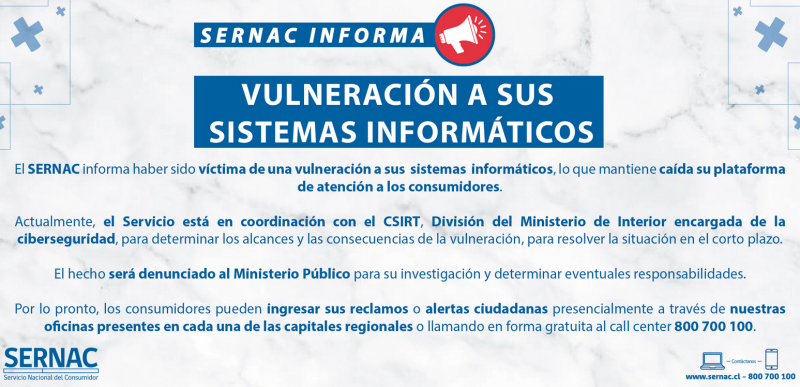Several government agencies in Latin America were targeted in ransomware attacks in the past months, and the latest victims are Chile and the Dominican Republic.
Chile’s Ministry of Interior reported last week that a government agency had its systems and online services disrupted by a piece of ransomware that targeted Windows and VMware ESXi servers. The ransomware encrypted files on compromised systems and renamed them with the extension .crypt.
The targeted agency appears to be Sernac, the country’s National Consumer Service, which ensures the protection of consumer rights. The organization disclosed the incident on August 25.
Chilean authorities have made public some indicators of compromise (IoC) and based on the available information SecurityWeek believes the incident involved the relatively new RedAlert ransomware, which is also known as N13V.
RedAlert uses double extortion, encrypting the victim’s files and threatening to leak data stolen from its systems unless a ransom is paid. RedAlert’s Tor-based leak website does not mention any Chilean government agency at the time of writing.

A government organization in the Dominican Republic was also hit by ransomware recently. The country’s national cybersecurity center said on August 24 that the Ministry of Agriculture’s Dominican Agrarian Institute (IAD) was targeted, but highlighted that the government does not plan on paying a ransom, to avoid encouraging threat actors to conduct these types of operations.
Bleeping Computer reported that the Quantum ransomware was involved in the attack. The cybercriminals claimed to have stolen more than 1 Tb of files and demanded a $650,000 ransom.
Currently there is no mention of IAD on Quantum’s data leak website.
Earlier this month, ransomware also hit Argentina’s Judiciary of Córdoba, forcing the organization to shut down systems and services. Bleeping Computer reported that a new piece of file-encrypting ransomware named ‘Play’ was involved in the incident.
In May, the hackers behind the Conti ransomware targeted Costa Rica’s computer systems and threatened to overthrow the government. At around the same time, the cybercriminals also announced hacking a government organization in Peru. The attacks appeared to be part of an effort to make a grand exit as the Conti operation was shut down shortly after, likely due to the brand becoming toxic.
Related: Number of Ransomware Attacks on Industrial Orgs Drops Following Conti Shutdown
Related: Cybercriminals Apparently Involved in Russia-Linked Attack on Montenegro Government















